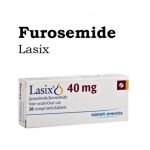
Contents
- 1 Kidney Pain
- 1.0.1 Where are the kidneys located?
- 1.0.2 What is the function of the kidneys?
- 1.0.3 What are some kidney conditions and diseases that cause pain?
- 1.0.4 What are the first signs and symptoms of kidney pain?
- 1.0.5 When should call a doctor for kidney pain?
- 1.0.6 What procedures and tests diagnose kidney diseases?
- 1.0.7 What level of BUN indicates kidney failure?
- 1.0.8 What is the treatment for kidney pain?
- 1.0.9 What is the prognosis of kidney pain?
- 1.0.10 Can kidney pain be prevented?
Kidney Pain
The kidneys are organs that remove waste products, excess fluid, and produce hormones that regulate blood pressure, red blood cell production, acid regulation, and influence electrolyte metabolism.
Each kidney contains a million units called nephrons, microscopic filters for blood. You can lose up to 90% of kidney function without symptoms.
Where are the kidneys located?
The kidneys are bean-shaped organs located against the back muscles in the upper abdomen. The right kidney is slightly lower to accommodate the liver size.
What is the function of the kidneys?
The kidneys remove waste products and excess fluid by producing urine. They also regulate the body’s salt, potassium, and acid content and stimulate the production of red blood cells that help regulate blood pressure and control calcium and electrolyte metabolism.
What are some kidney conditions and diseases that cause pain?
Causes of kidney pain or flank pain include urinary tract infections (UTI), bladder infections (cystitis), kidney infections (pyelonephritis), kidney stones (nephrolithiasis and ureterolithiasis), kidney cancer, hydronephrosis, glomerulonephritis, kidney bleeding (hemorrhage), and more.
QUESTION
What are the first signs and symptoms of kidney pain?
Symptoms of kidney pain include discomfort, aches, or sharp pain in the back. It can sometimes radiate to the groin or abdomen. Other symptoms may include a metallic taste in the mouth, bad breath, and swelling or shortness of breath.
Kidney pain can be confused with other conditions like muscle strains, spinal problems, rib pain, and more.
When should call a doctor for kidney pain?
Seek medical attention if you experience intense kidney or flank pain. Warning signs of kidney disease include blood or protein in the urine, frequent or painful urination, high blood pressure, and swelling in the hands and feet. People with diabetes or kidney dysfunction should regularly check for kidney problems.
What procedures and tests diagnose kidney diseases?
Diagnostic tests for kidney diseases include a complete blood count (CBC), kidney function tests, urine tests, CT scans, ultrasounds, and more. Specific tests like glomerular filtration rate (GFR) and creatinine clearance may be performed to diagnose kidney failure.
What level of BUN indicates kidney failure?
A high blood urea nitrogen (BUN) level may indicate kidney dysfunction, but there is no specific value to diagnose kidney failure. BUN tests can be used in combination with creatinine tests for a more accurate diagnosis.
Factors unrelated to the kidneys can also cause high BUN levels, such as a high protein diet, burns, dehydration, and certain medications.
What is the treatment for kidney pain?
Treatment for kidney pain depends on the underlying cause. Pain relief medications like ibuprofen, acetaminophen, or morphine can provide temporary relief. Infections may require antibiotics. Surgery may be necessary for kidney stones that block the ureter or larger kidney stones.
What is the prognosis of kidney pain?
The prognosis for kidney pain depends on the underlying cause. With prompt and appropriate treatment, most patients have a good outcome.
Can kidney pain be prevented?
Kidney pain can be prevented by avoiding situations that can lead to kidney infection or damage.


